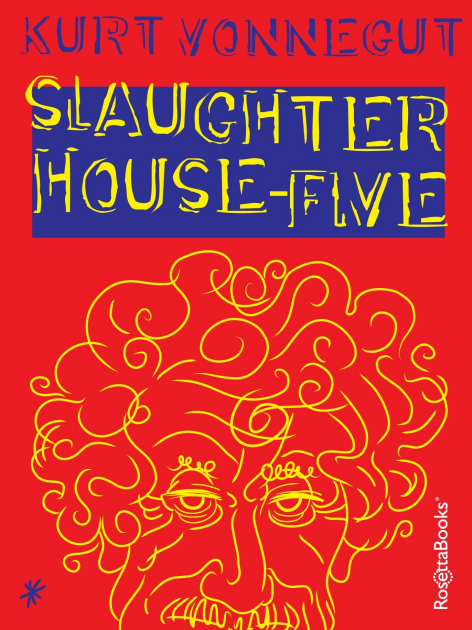Slaughterhouse-Five, by Kurt Vonnegut Jr.

Slaughterhouse-Five by Kurt Vonnegut Jr.
My rating: 1 of 5 stars
»Another book, another June
Another sunny afternoon
Another season, another reason
For breakin’ with classics!«
(Based on “Makin’ Whoopee”, by Gus Kahn)
So, 1969 is still too old for me or maybe it’s just that this rambling, repetitive, dated-feeling, non-linear novel is a true classic in the worst sense of the word!
Supposedly, it focuses on the firebombing of Dresden during World War II but in fact, it’s more of an episodic play on war. The protagonist, Billy Pilgrim, is a prisoner of war, an optometrist and a time-traveller (since he suffered a brain trauma and had a major surgery done…) who experiences his life in a non-linear way and tells us about it.
Actually, I’m tempted to say he threatens us, because he’s become convinced he’ll live forever, thus troubling us with his terrible anecdotes.
Let’s get the most minor annoyance out of the way first: »So it goes.« – that phrase comes up exactly 106 times in a novel of barely 200 pages (yes, every time some kind of death occurs, I know, doesn’t make it any better). And it actually felt like a billion times.
Several times I fantasised about shooting a bullet at Vonnegut while screaming “So it goes” at the top of my lungs!
Also annoying: Billy Pilgrim’s brain-surgery induced belief he had been abducted by aliens from the planet »Tralfamadore«. There they put him under a glass dome, abduct a beautiful young actress for him whom he proceeds to impregnate and he lives the life…
Yes, I get he tries to rationalise his sense of powerlessness and isolation in a hostile world but I still hated it.
»There could be babies without men over sixty-five. There couldn’t be babies without other babies who had lived an hour or less after birth. And so on.
It was gibberish to Billy.«
(As was the novel to me!)
Moreover, the novel is also factually wrong in many aspects: Dresden has a long military history dating back to the 16th century, when it became the capital of Saxony and a major political and cultural centre. It was also a fortress city with strong fortifications and a large garrison. During World War 2, Dresden was a military centre for the Nazi regime, hosting several military factories, barracks, headquarters and transportation hubs.
For a novel that’s supposed to centre on Dresden, arriving at it after almost 75% of the novel has gone is also somewhat strange.
Also wrong: »It was the next night that about one hundred and thirty thousand people in Dresden would die. So it goes.«
Actually, there were 22.700 to 25.000 victims who died due to those bombings. Why does this matter? Because it’s still part of the narrative of the neo-Nazi plague that still infests (primarily) the eastern parts of Germany: While only about 20% of Germany’s population lives there, almost half the rightwing-extremist crimes were committed there…
»They were literary critics, and they thought Billy was one, too. They were going to discuss whether the novel was dead or not. So it goes.«
So, no, the novel itself isn’t dead. Just this kind of novel thankfully is. So it goes.
One out of five stars.
Ceterum censeo Putin esse delendam
View all my reviews